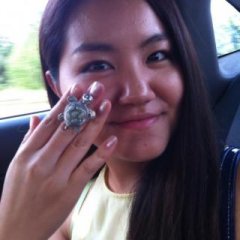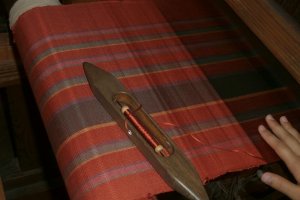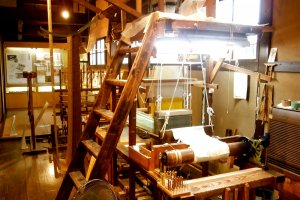What comes to your mind when you hear the name Hakata? Do you know anything about the area – like what type of local specialties they have? In fact, Hakata has lots of fine traditional products they are proud of, and one is Hakata-ori. This woven textile is mainly made in the Hakata area. It is one of the most prestigious textiles in Japan, as sumo wrestlers have to be above a certain rank in order to wear them, and they also used Hakata-ori on a robe for Pope John Paul Ⅱ. Why would you not get excited to hear that there is a place you get to watch the artisans make the beautiful artwork, and you get to participate in the weaving experience at the same time?
Hakata Machiya Folk Museum consists of three preserved traditional town-house-style buildings (hence machi-ya, meaning town and shops) and is located right in front of Kushida Shrine, near Hakata Station. The shops introduce the culture and life of Hakata during the Meiji and Taisho eras (1868-1926) in appealing ways, including displaying a miniature version of the town, as well as demonstrations and hands-on fun.
In one of the machiya, you will see two huge wooden objects right by the entrance, the weaving machines. There is always a staff member by the machines, most likely demonstrating, so if you are interested in experiencing the traditional technique, you can make a request. The professional staff will guide you throughout the session, so don’t worry. They do not charge you for the experience, and entering the house is free (though not for the museum house), so you can casually walk in and see what’s there.
When I visited Hakata Machiya Folk Museum to try out my weaving skills, I quickly got along with the staff member that was teaching me the steps. I learned a lot from the conversation between her and I and noticed how profound Hakata-ori is. The technique of this prestigious textile was originally from the Tang Dynasty of China, and a Japanese merchant who went there carried it into Hakata. Since then, the skill has been handed down and developed into their own new design called kenjo-gara, which is peculiar to Hakata-ori. Kenjo-gara is made out of four stripe patterns:
- Dokko: represents the Buddhist equipment that crushes all the worldly passions we have
- Hanazara: represents the saucer that is used to arrange the flowers for purifying purposes
- Oyakojima: the thicker lines on the outside of the thinner lines representing the parents’ love desire to protect their children
- Koukoujima: the opposite of oyakojima, representing the children’s love and support of their parents
With all four patterns, Hakata-ori reminds us to live by looking up to our ancestors, respecting our family, and supporting each other.
The true meaning of this traditional handicraft may sort of confuse you, but after knowing the deep thoughts behind the artwork, the textiles will seem much more beautiful for sure. After all, Hakata-ori isn’t just a mere piece of fabric – it’s hard in meaning and in practice.































